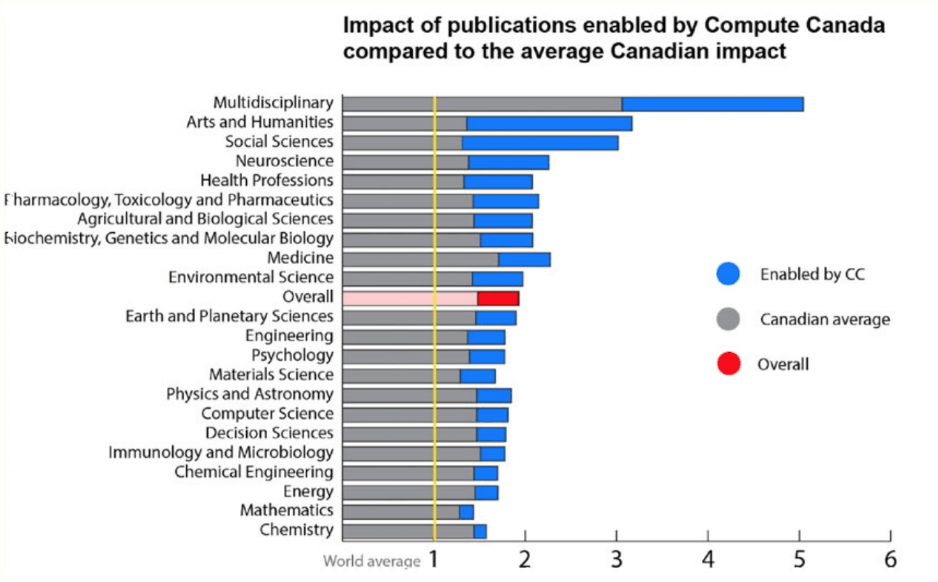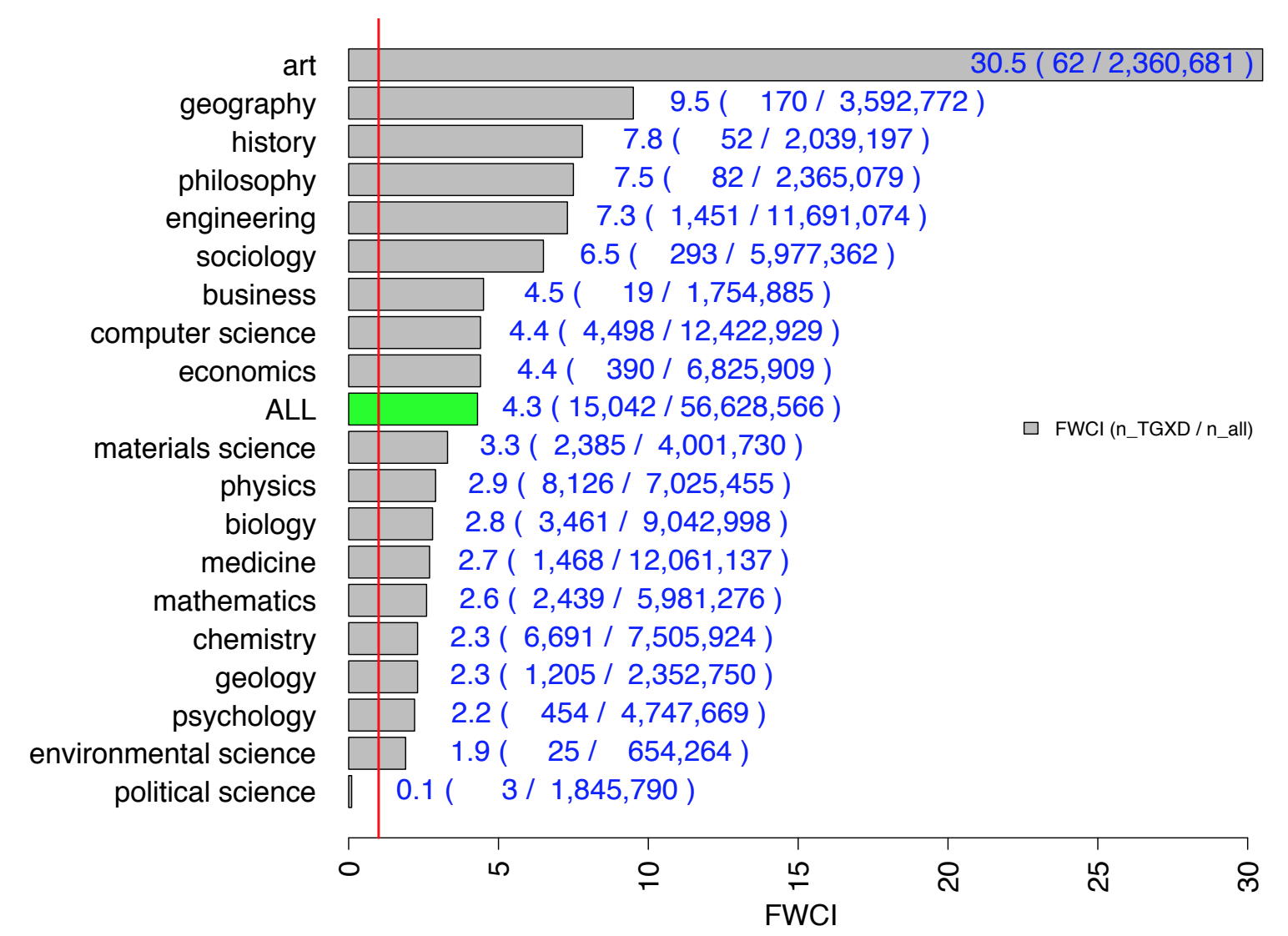Digital Infrastructure Makes a Big Impact on Research Excellence
On average, using DI increases citation rates by 2 to 4 times!

Major DI providers in both the US and Canada have quantified how research that uses DI techniques and tools has a significantly greater impact than research that does not use these techniques. DI can on average enable increased research impact, as measured by FWCI, by a factor of almost 2, as reported by Compute Canada
, or of over 4, as reported by XSEDE
. Both analyses were each based on over 15,000 articles in science journals, strongly demonstrating the importance of DI in today’s R&D.
In Canada, where Compute Canada is the primary provider of DI, Compute Canada conducted a bibliometric analysis of research outputs self-reported by over 2,300 faculty users of the facility. In total they reported 35,666 research contributions that were enabled by Compute Canada between 2011 and 2016, which is 47% of the total reported by those users. 25,759 of the enabled contributions were articles in science journals, and, of those, the impact of 15,874 could be quantified using bibliometric tools provided by SciVal .
This analysis showed that using Digital Infrastructure almost DOUBLED the impact of the resulting research. The actual bibliometric statistic is called the field-weighted citation index (FWCI) (see more about that here ) – and an FWCI of 1.93 means that those articles were cited on average almost twice as often as papers in the same field (worldwide). In some fields using DI techniques was associated with FWCIs of roughly 5. The chart below illustrates field-by-field results.

Of course, correlation is not causation – i.e. using DI techniques does not automatically give research greater impact. However the relationship, particularly the pattern of increased impact across different research fields, suggests that employing DI techniques in fields that haven’t yet adopted them widely (e.g. neuroscience) can enable significant gains in research excellence and competitive advantage. Similarly, in fields that have used DI techniques for some time (e.g. chemistry), digital infrastructure is an essential tool for research in the field, so DI investment is not an option.
In the US, an organization similar to Compute Canada, the Extreme Science and Discovery Environment (XSEDE) is a National Science Foundation-funded entity that coordinates the largest digital infrastructure platform for US academic research. XSEDE undertook a similar analysis of its impact on research. Identifying the research outputs supported by XSEDE was more difficult than for Compute Canada, since the US does not have a capability like the Canadian Common CV , nevertheless XSEDE was able to identify 15,042 journal articles resulting from research supported by XSEDE resources over the period 2005-2016.
Using the same statistic calculated by Compute Canada, XSEDE arrived at an FWCI of 4.3 – meaning that, for the analyzed papers, on average they received over FOUR TIMES the number of citations that might have been expected for papers in their respective fields. Also, similar to Compute Canada, the range of FWCIs calculated for different fields of research suggests that:
- Adopting DI techniques in research areas that HAVE NOT traditionally used these techniques is linked to very significant increases in impact, so digital infrastructure can apparently be used to significantly increase research excellence.
- Using DI techniques in those areas that HAVE broadly
adopted such techniques has become essential to remaining competitive in these
fields.

Comparing the two analyses, I suspect the Canadian study overreported the number of research contributions that were enabled by Compute Canada. Conversely, I was surprised by how few articles were available for analysis by XSEDE – considering their user base is probably 10x that of Compute Canada’s, and the time period used (2005-2016) was much longer than was used by Compute Canada (2011-2016). I suspect that the actual number of journal articles that were enabled by XSEDE could be much higher, so the 15,000 articles that were analysed could have represented an unusually impactful subset of the total research output. Nevertheless, both analyses quantify the significant impact that digital infrastructure has on research excellence.





